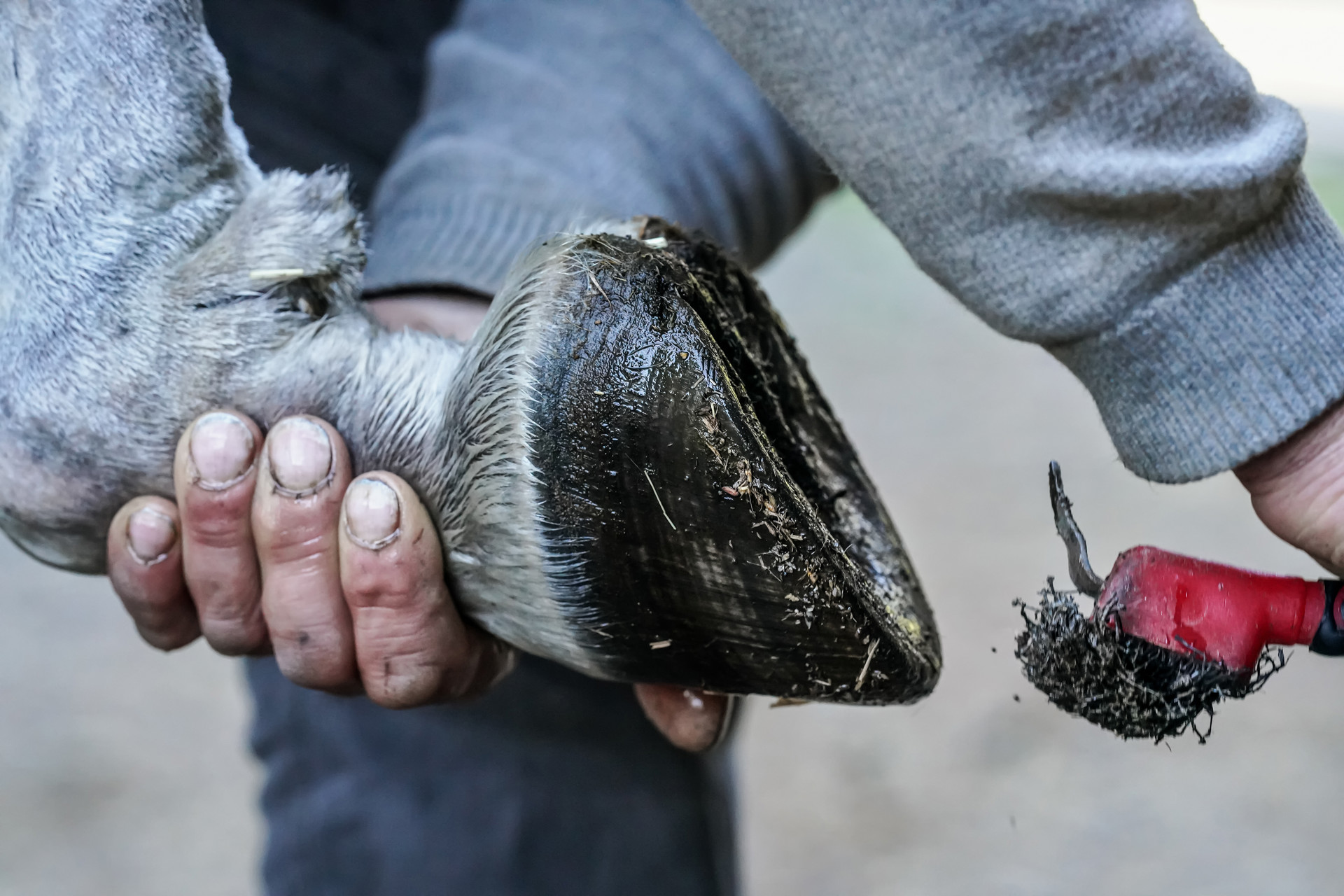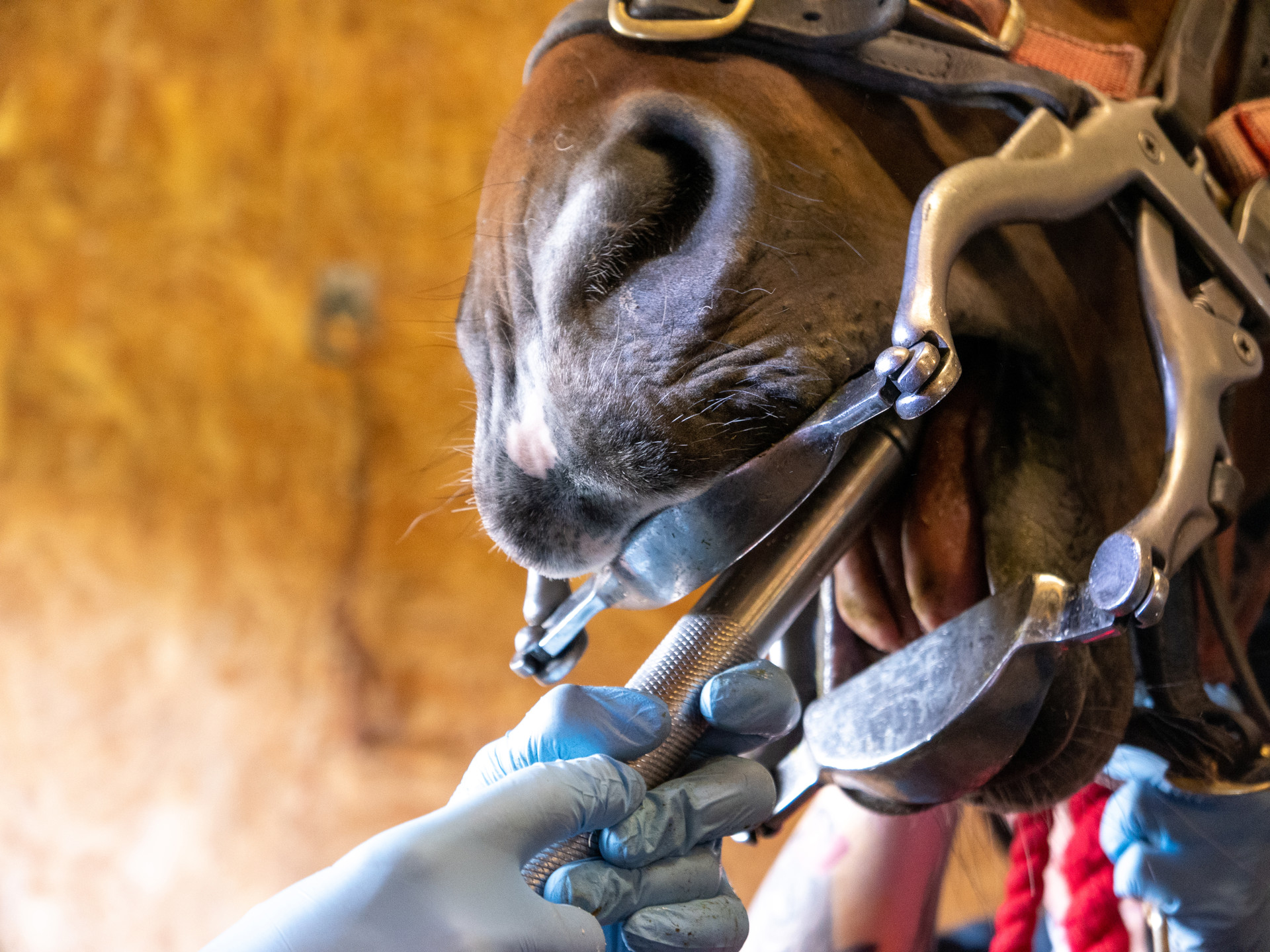
Paraprofessionals
such as farriers, musculoskeletal care/physiotherapists and equine dental technicians
Working with Paraprofessionals at NWEV
At North West Equine Vets, we value the important role that paraprofessionals - such as farriers, musculoskeletal care/physiotherapists and equine dental technicians - play in supporting equine health and welfare.We pride ourselves on building strong, respectful working relationships with these professionals, recognising that good communication and mutual trust are key to achieving the best outcomes. We believe that a whole-team approach, where vets and paraprofessionals collaborate openly and with an open mind, ensures that every horse receives the most well-rounded and effective care possible.
Musculoskeletal Care
In the UK, veterinary physiotherapists and other musculoskeletal therapists work as part of a vet-led process to ensure horses receive safe and effective treatment. This partnership is guided by rules set out by the Royal College of Veterinary Surgeons (RCVS, updated November 2020).
When Veterinary Approval Is Needed
If a horse is lame, underperforming, or showing signs of illness or injury, a veterinary surgeon must first examine the horse before musculoskeletal therapy can take place. Once the vet has diagnosed the issue can they approve treatment from a suitably qualified therapist.
When Therapy Can Proceed Without Referral
If the horse is healthy and receiving routine or maintenance care, veterinary approval is not required - though the horse must still be registered with a veterinary practice. In these cases, the therapist can work directly with the owner, keeping the vet informed if concerns arise.
What Counts as Musculoskeletal Therapy
The RCVS defines musculoskeletal therapy to include physiotherapy, osteopathy, chiropractic care, and other manipulative treatments. Therapists must be appropriately qualified and over 18 years of age.
A Team Effort
By working together - vet, therapist, and owner - every horse benefits from a coordinated approach that supports health, recovery, and performance.
For more detailed guidance, see the British Equine Veterinary Association (BEVA) resources.


Working with farriers
Vets and farriers often work side by side to ensure horses receive the best possible care for their hoof health and overall soundness. This collaboration combines the veterinary surgeon’s medical expertise with the farrier’s specialist knowledge of trimming, shoeing, and hoof balance.
When Veterinary Input Is Needed
If a horse has lameness, hoof disease, injury, or other underlying health issues, a veterinary surgeon should assess the horse before any corrective or remedial shoeing is carried out. The vet’s diagnosis helps the farrier tailor their work to the horse’s specific needs.
When Farriers Can Work Independently
For healthy horses in regular work, farriers provide routine trimming and shoeing without vet referral. However, good communication between owner, farrier, and vet means any developing issues - such as subtle gait changes or hoof cracks - can be spotted early and addressed.
What Counts as Farriery
Farriery includes trimming, shaping, and fitting horseshoes, as well as corrective shoeing to help address conformational or performance-related issues. Farriers must be registered with the Farriers Registration Council and meet professional standards for training and conduct.
A Team Effort
When vets, farriers, and owners work together, the horse benefits from a complete approach to hoof health. This team effort supports soundness, comfort, and performance while helping to prevent future problems.
For more information, the Worshipful Company of Farriers and the British Farriers and Blacksmiths Association (BFBA) provide further resources.
Equine dental technician (EDT)
When Veterinary Input Is Needed
If a horse has signs of dental disease, injury, weight loss, behavioural changes, or any health concern linked to the mouth, a veterinary surgeon should assess the horse first. In certain cases - such as requiring IV sedation, extractions or treatment of disease - only a qualified vet can carry out the procedure. The vet’s diagnosis guides the EDT’s work and ensures the horse receives the correct treatment.
When EDTs Can Work Independently
For routine dental maintenance on healthy horses - such as rasping to balance the bite - an appropriately qualified EDT can work without direct veterinary referral (see the register below) NWEV vets can give IV sedation to your horse for a registered EDT to work where necessary. We can also supply oral sedation upon request.
What Counts as Equine Dentistry
Equine dentistry includes examination of the mouth, rasping teeth, removing sharp points, and balancing the bite. More advanced or invasive procedures - such as extractions, treatments involving sedation, or work on diseased tissue - can only be performed by a veterinary surgeon or by an EDT working under veterinary direction. All EDTs must be suitably qualified, follow current welfare guidelines, and work within their legal scope of practice.
For more information, see the British Association of Equine Dental Technicians (BAEDT) and the British Equine Veterinary Association (BEVA) guidelines. BEVA guidelines - who can do what in a horse mouth?
